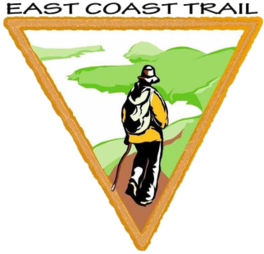| East Coast Trail | |
|---|---|
 | |
| Length | 336 km (209 mi) |
| Location | Newfoundland, Canada |
| Trailheads | Near St. John's; Cappahayden |
| Use | Hiking |
| Difficulty | Easy to strenuous |
| Season | Year-round |
The East Coast Trail (ECT) is a long-distance coastal footpath located in the Canadian province of Newfoundland and Labrador. It is a developed trail over 336 kilometres (209 mi) long,[1] the creation of which began in 1994. It is made up of 25 linked wilderness paths and passes through more than 30 communities.[2] It was named one of the best adventure destinations by National Geographic in 2012 and is extended and improved yearly.[3]
Maintained by the East Coast Trail Association and located primarily on public lands, the trail follows the east coast of Newfoundland, along the Atlantic Ocean. The path passes through many small coastal outports (villages) in the bays of the Avalon Peninsula. It runs from Topsail Beach, north to Cape St. Francis, then south through St. John's, and continues south as far as Cappahayden.[2] It is intended that the trail will eventually be extended to Trepassey in the south and across to Placentia in the west (from Ferryland).[4]
The trail also passes several National historic sites, including Signal Hill, St. John's, Cape Spear (the easternmost point in North America, not including Greenland), and Ferryland, the site of the 17th-century Colony of Avalon. It also passes through La Manche and Chance Cove Provincial Parks. There are seasonal views of icebergs, birds, whales, other marine and plant life, and eight historic lighthouses along the path. The individual sections of the trail range in hiking time from a few hours to a full day. There are some designated camping spots along the trail, though most walkers use local accommodation.[2]


- ^ "Frequently Asked Questions" East Coast Trail Association
- ^ a b c "Home". www.eastcoasttrail.com. Retrieved 2021-01-21. (The ECT formerly had 26 paths, but the short "Mudder Wet Trail" was added to the "Spurwink Island Trail" in 2020, making 25 paths.)
- ^ "Best Adventure Destinations for 2012 - National Geographic". 2016-12-14. Archived from the original on January 12, 2014. Retrieved 2017-04-06.
- ^ "East Coast Trail" Rough Guide